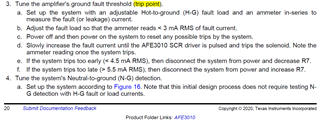AFE3010: Several questions
(+) AFE3010: Several questions - Sensors forum - Sensors - TI E2E support forums
Hi team,
As per mention above thread how would you find out value of RFB = 36kOhm, give detail description on that.
And can you please give all the formula guide to related this application note?
Thanks
Parth Bhavsar



